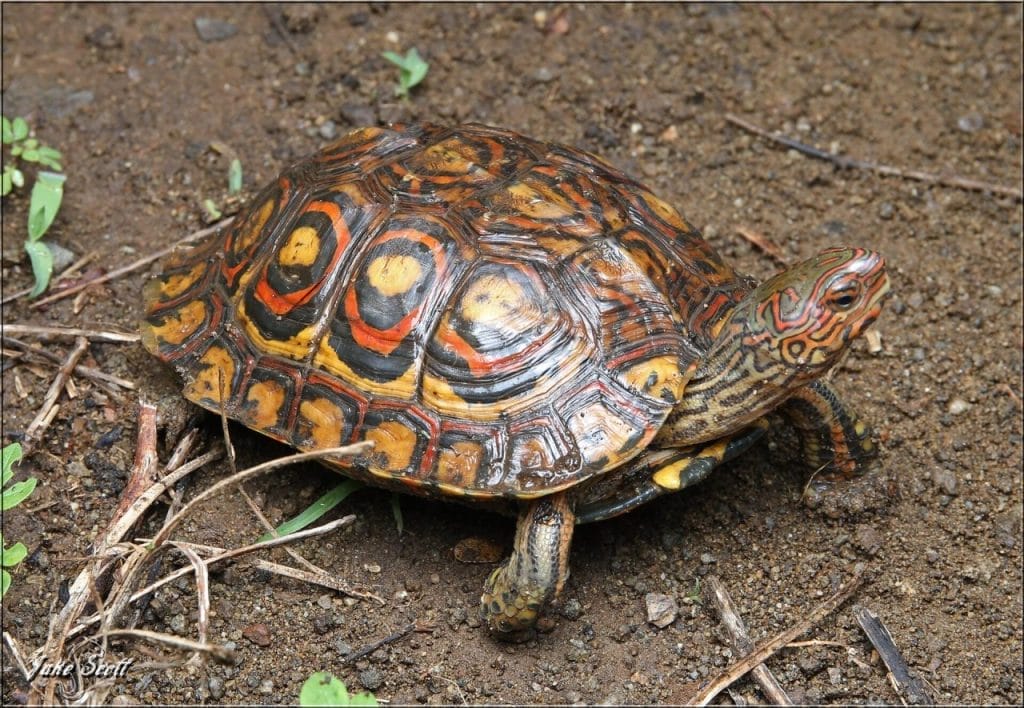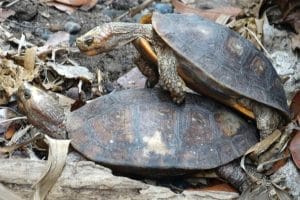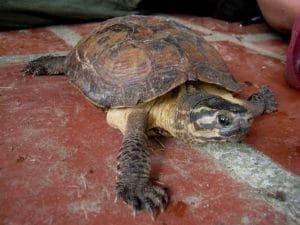Rhinoclemmys pulcherrima (Painted Wood Turtle)
Home > Turtle Database > Rhinoclemmys pulcherrima (Painted Wood Turtle)

Rhinoclemmys pulcherrima, commonly known as the Painted Wood Turtle, is a strikingly patterned terrestrial turtle native to Central America. It is known for its vibrant red and yellow markings, making it one of the most colorful members of its genus.
Native To These Regions
Central America, MexicoNative Turtle Species Map – Find Turtles by Region
Scientific Classification
Kingdom: Animalia
Phylum: Chordata
Class: Reptilia
Order: Testudines
Family: Geoemydidae
Genus: Rhinoclemmys
Species: Rhinoclemmys pulcherrima
Common Names
Painted Wood Turtle
Central American Wood Turtle
This Hilarious Turtle Book Might Know Your Pet Better Than You Do
Let’s be real—most turtle care guides feel like reading a textbook written by a sleep-deprived zookeeper.
This one’s not that.
Told from the snarky point of view of a grumpy, judgmental turtle, 21 Turtle Truths You’ll Never Read in a Care Guide is packed with sarcasm, sass, and surprisingly useful insights.
And hey—you don’t have to commit to the whole thing just yet.
Grab 2 free truths from the ebook and get a taste of what your turtle really thinks about your setup, your food choices, and that weird plastic palm tree.
It’s funny, it’s honest, and if you’ve ever owned a turtle who glares at you like you’re the problem—you’ll feel seen.
Identification
Description
The Painted Wood Turtle has an oval-shaped, slightly domed carapace with dark brown or black coloration, often adorned with bright red and yellow markings. The plastron is yellow with dark blotches. The head features bold red and orange streaks, giving the species a distinctive and colorful appearance.
Sexual Dimorphism
Males are generally smaller than females and have a longer, thicker tail. The plastron of males is slightly concave, while females have a flat plastron.
Check more turtles from the Rhinoclemmys genus
Native Origin and Distribution
Geographical Range
This species is found in Central America, ranging from Mexico to Costa Rica. It inhabits forested regions near water sources, often in humid environments.
Preferred Habitat
Painted Wood Turtles prefer tropical and subtropical forests with access to slow-moving streams or ponds. They are often found in areas with dense vegetation, where they can forage for food and seek shelter.
Behavior
Feeding Habits
They are omnivorous, feeding on a mix of fruits, flowers, leaves, insects, worms, and small vertebrates. In captivity, they enjoy a varied diet that includes vegetables and commercial turtle food.
Predators
Their natural predators include large birds, mammals, and reptiles. Young turtles are especially vulnerable to predation.
Reproduction
Breeding Season
Breeding typically occurs during the wet season, when conditions are favorable for egg-laying.
Reproductive Method
Females lay small clutches of eggs, usually in loose soil or leaf litter. Hatchlings emerge after an incubation period of around 80–100 days.
Conservation
Extinction Status
Currently, the Painted Wood Turtle is classified as Data Deficient by the IUCN.
Threats
Habitat destruction due to deforestation and agricultural expansion poses a major threat. The pet trade also affects wild populations, as these turtles are often collected and sold internationally.
Conservation Measures
Some countries have laws restricting the capture and trade of this species. Conservation efforts include habitat preservation and captive breeding programs.
Economic Importance
This species is popular in the exotic pet trade due to its striking coloration and manageable size. However, its collection from the wild has raised conservation concerns.
Interesting Facts
Painted Wood Turtles are known for their curious and friendly nature, often recognizing their owners in captivity. They can live for over 20 years with proper care. Their bright markings help them blend into the forest floor, providing natural camouflage despite their vivid colors.

About Author
Muntaseer Rahman started keeping pet turtles back in 2013. He also owns the largest Turtle & Tortoise Facebook community in Bangladesh. These days he is mostly active on Facebook.














